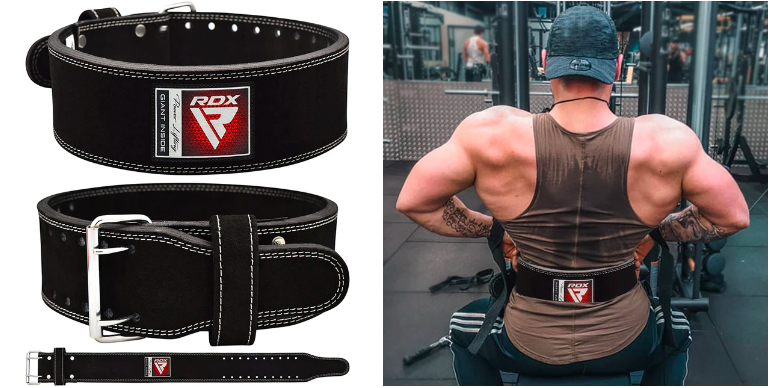 Launch apps instantly. Claim $200 credits on DigitalOcean
Launch apps instantly. Claim $200 credits on DigitalOcean
Weightlifting Belts Demystified: Everything You Need to Know
Written by levis » Updated on: March 28th, 2024

Weightlifting belts are a common sight in gyms around the world, often worn by athletes and fitness enthusiasts alike. These belts are designed to provide support to the lower back and core during heavy lifting exercises. While some may argue that weightlifting belts are unnecessary, many experts believe that they can be beneficial when used correctly. In this article, we'll explore the ins and outs of weightlifting belts, including their benefits, how to choose the right one, and proper techniques for using them.
What is a Weightlifting Belt?
A weightlifting belt is a sturdy belt that is worn around the waist to provide support to the lower back and core during heavy lifting exercises. These belts are typically made from leather or other durable materials and are designed to be worn tightly around the waist.
Purpose of a Weightlifting Belt
The fundamental role of a weightlifting belt is to furnish vital support to the lower back and core, particularly during strenuous weightlifting maneuvers. By wearing a weightlifting belt, you can help stabilize your spine and reduce the risk of injury.
Types of Weightlifting Belts
There are several types of weightlifting belts available, including:
• Power lifting Belts: These belts are typically wider in the back and taper down towards the front, providing maximum support to the lower back and core.
• Olympic Weightlifting Belts: These belts are narrower all around and are designed to allow for greater flexibility and range of motion.
• Velcro Belts: These belts use a Velcro closure system instead of a buckle, making them easy to put on and take off.
Benefits of Using a Weightlifting Belt
Using a weightlifting belt can offer several benefits to weightlifters and fitness enthusiasts. Here are some of the key advantages:
• Support and Stability: One of the primary benefits of using a weightlifting belt is that it can provide additional support and stability to the lower back and core during heavy lifting exercises. This can help reduce the risk of injury and allow you to lift heavier weights safely.
• Injury Prevention: Injury prevention is a significant benefit of using a weightlifting belt. By offering support to the lower back and core, the belt can effectively reduce the risk of injuries such as strains and sprains. Additionally, wearing a weightlifting belt can help maintain proper form during lifts, further reducing the risk of injury.
• Increased Intra-Abdominal Pressure: When worn correctly, a weightlifting belt can help increase intra-abdominal pressure, which can help stabilize the spine and reduce the risk of injury during heavy lifts.
How to Choose the Right Weightlifting Belt
When choosing the right weightlifting belt, there are several factors to consider to ensure you get the best fit and support for your needs. Here's a guide to help you select the right weightlifting belt:
• Size and Fit: When choosing a weightlifting belt, it's important to select one that fits snugly around your waist without being too tight. The belt should be wide enough to provide adequate support to the lower back and core.
• Material: Weightlifting belts are commonly crafted from sturdy materials like leather or other durable fabrics, ensuring longevity and reliable support during workouts. Leather belts are often preferred for their durability and support, but synthetic materials can also be effective.
• Buckle or Velcro Closure: Some weightlifting belts use a buckle closure system, while others use Velcro. Both types of closures can be effective, so it ultimately comes down to personal preference.
When to Use a Weightlifting Belt
Weightlifting belts can be a valuable tool for enhancing your lifting performance and reducing the risk of injuries. However, it's essential to use them correctly to reap their benefits fully. Here's a guide on when to use a weightlifting belt effectively:
• Heavy Lifts: Weightlifting belts are predominantly employed during intense weightlifting sessions, particularly for demanding exercises like squats, deadlifts, and overhead presses.
• Maximal Effort Lifts: When aiming for a maximal-effort lift, the utilization of a weightlifting belt can offer valuable additional support and stability, aiding in the execution of the lift with greater ease and safety.
• During Sets: Some lifters prefer to wear a weightlifting belt during all sets of a particular exercise, while others only wear it for heavier sets.
Proper Technique for Using a Weightlifting Belt
Using a weightlifting belt correctly is essential to maximize its benefits and reduce the risk of injury. Here's a guide on the proper technique for using a weightlifting belt:
• Positioning: When wearing a weightlifting belt, it should be positioned around the waist, just above the hip bones.
• Tightness: The belt should be tightened to a comfortable but snug fit. It should be tight enough to provide support, but not so tight that it restricts breathing or movement.
• Breathing Techniques: When wearing a weightlifting belt, it's important to use proper breathing techniques. You should take a deep breath into your diaphragm before starting the lift and hold your breath throughout the lift.
Common Mistakes to Avoid
When using a weightlifting belt, it's important to avoid common mistakes that can reduce its effectiveness and increase the risk of injury. Here are some common mistakes to avoid:
• Wearing the Belt Too Tight: Wearing a weightlifting belt too tight can restrict breathing and movement, and can actually increase the risk of injury.
• Using the Belt as a Crutch: While a weightlifting belt can provide support, it's important not to rely on it too heavily. It's still important to maintain proper form and technique during lifts.
• Neglecting Core Strength: While a weightlifting belt can offer support, it remains essential to uphold core strength through consistent engagement in core-strengthening routines.
Alternatives to Weightlifting Belts
While weightlifting belts can be a helpful tool, there are alternatives that you can consider to strengthen your core and improve your lifting technique. Here are some alternatives to weightlifting belts:
• Core Strengthening Exercises: One alternative to using a weightlifting belt is to focus on strengthening your core muscles through exercises such as planks, Russian twists, and leg raises.
• Using a Belt for Specific Lifts: Some lifters prefer to only use a weightlifting belt for certain lifts, such as squats and deadlifts, while performing other lifts beltless to strengthen their core.
Conclusion
Weightlifting belts can be a useful tool for providing support and stability during heavy lifting exercises. By choosing the right belt, using it correctly, and focusing on core strength, you can maximize the benefits of wearing a weightlifting belt while minimizing the risks.
Copyright © 2024 IndiBlogHub.com Hosted on Digital Ocean










Post a Comment
To leave a comment, please Login or Register